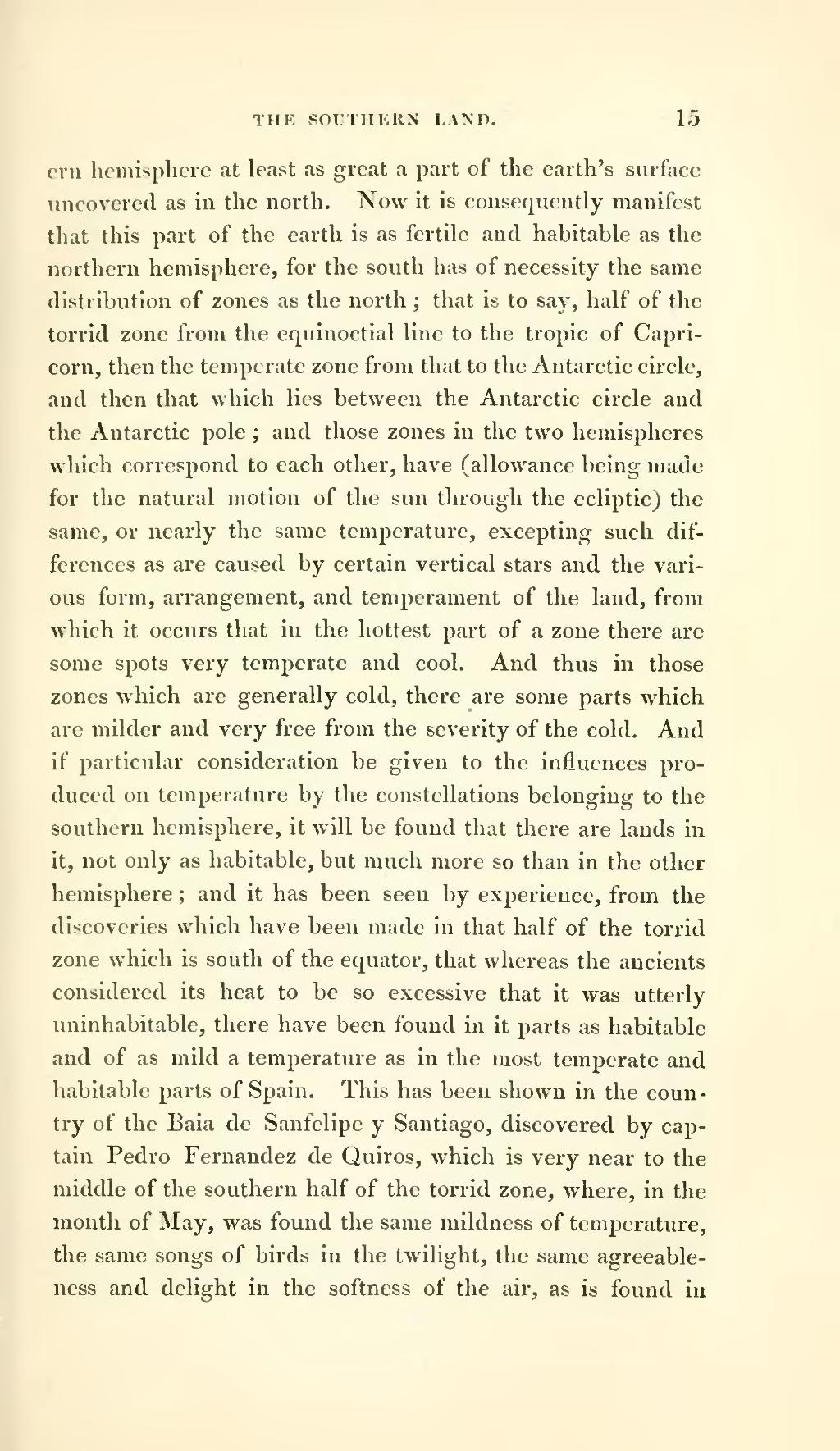ern hemisphere at least as great a part of the earth's surface uncovered as in the north. Now it is consequently manifest that this part of the earth is as fertile and habitable as the northern hemisphere, for the south has of necessity the same distribution of zones as the north; that is to say, half of the torrid zone from the equinoctial line to the tropic of Capricorn, then the temperate zone from that to the Antarctic circle, and then that which lies between the Antarctic circle and the Antarctic pole; and those zones in the two hemispheres which correspond to each other, have (allowance being made for the natural motion of the sun through the ecliptic) the same, or nearly the same temperature, excepting such differences as are caused by certain vertical stars and the various form, arrangement, and temperament of the land, from which it occurs that in the hottest part of a zone there are some spots very temperate and cool. And thus in those zones which are generally cold, there are some parts which are milder and very free from the severity of the cold. And if particular consideration be given to the influences produced on temperature by the constellations belonging to the southern hemisphere, it will be found that there are lands in it, not only as habitable, but much more so than in the other hemisphere; and it has been seen by experience, from the discoveries which have been made in that half of the torrid zone which is south of the equator, that whereas the ancients considered its heat to be so excessive that it was utterly uninhabitable, there have been found in it parts as habitable and of as mild a temperature as in the most temperate and habitable parts of Spain. This has been shown in the country of the Baia de Santelipe y Santiago, discovered by captain Pedro Fernandez de Quiros, which is very near to the middle of the southern half of the torrid zone, where, in the month of May, was found the same mildness of temperature, the same songs of birds in the twilight, the same agreeableness and delight in the softness of the air, as is found in
